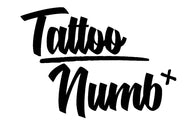From being heavily invested in the tattoo numbing cream industry, we know a thing or two about the tattooing process. Since the beginning of the 21st century, we understand that tattoo procedures have increased by 36%. Therefore, to help those getting their first tattoo, we thought detailing the process could be advantageous. Here's what you need to know:
- Selecting a tattoo salon and artist

Before initially setting up an appointment, you'll want to perform some research on tattoo salons and artists. By doing this, you can guarantee yourself the best possible tattoo.
You'll want to consider many things when choosing a tattoo salon and artist. Some of these consist of the following:
- How local are they?
- When are they available?
- Do they have a portfolio?
- Are their reviews positive?
- Is there work to your standard?
The above are some questions you'll want to think about when selecting a tattoo salon and artist. Without question, there are more. However, this will highly depend on an individual's needs.
- Choosing a tattoo design
The research doesn't stop there. Including the above homework, you'll want to develop an understanding of the tattoo design wanted.
If you choose a tattoo artist and salon first, this step is straightforward. By doing this, you can consult the tattoo artist, and they can help.
However, it's best to understand the design, size, colour (black and grey or colour), and placement before meeting your tattooist. Undoubtedly, the tattooist will appreciate this, and it'll streamline the process more.
- Finding the perfect tattoo placement

Yes, you guessed it, the research doesn't stop there. Additionally, you'll want to choose the tattoo placement. Ideally, if it's your first tattoo, don't choose the four most painful areas.
It would help if you got your first tattoo in unpainful areas. For women, this can be on your thighs and back. In contrast, the non-painful locations for men are the arms and thighs.
Without question, you can choose wherever. However, these locations get highly recommended if you can't tolerate pain well.
If you want to choose a location that is considered "highly painful" on a tattoo pain threshold chart, then using tattoo numbing cream can help reduce the severity. By making the tattoo numb, it's possible to make it a pain-free procedure.
- Paperwork and payment
Next, it's time to finalise the paperwork and payment. The paperwork is simple, consisting of essential details like ID, age, phone number, address, etc.
Afterwards, you'll need to pay for the procedure. Once the size, placement, and design are completed, the tattooist will quote the entire project. The price shouldn't increase during the process, and you might want to consider a tip once the tattoo gets finished.
- Tattoo preparation
Excellent, you're one step closer to getting the tattoo. Before initially getting this, it's time to prepare for the procedure. Here are some preparation steps that you'll encounter:
- First, the tattooist will give you the rundown before the procedure. For instance, wear loose clothing, don't drink alcohol or do drugs before the tattoo, get a good night's sleep, etc.
- Upon arrival, you could apply tattoo numbing cream to the location. However, be sure to ask your tattooist whether this is okay. Some artists don't mind when their clients use this; others do.
- When you're there, make sure that you're comfortable. Most tattoo chairs have various modification features, which could make the process more enjoyable. Tell your tattooist if you're not comfortable, and they'll figure something out.
- Additionally, if you're allergic to latex, tell your artist. From them knowing this, they can wear nitrile gloves instead.
- The tattooing process

After the above, it's time to get your tattoo. For warning, the first few seconds are the worst. If you use cream to make the tattoo numb, you won't encounter this. However, if not, you will. But don't worry; it'll quickly lessen when your body starts to understand this new sensation.
The tattoo process will go like this; linework, shading, and colouring. Depending on how large the tattoo is, this could get split up over various sessions, which will get determined before the process.
- Finishing the procedure up
After each session, the tattooist will clean up the inked area. When they do this, the tattooist typically uses a hot towel to calm down the inflammation of the skin. Afterwards, they'll apply a protective cream to the tattoo and probably take a picture for their portfolio.
The tattooist will begin wrapping protection wrap around the location when the session has finished. Doing this will stop any unwanted debris from attaching itself to the tattooed areas and reduce the possibility of infections.
- Aftercare advice
After the "real" tattoo process, the tattoo artist will provide some aftercare advice that you'll want to follow. Some essential pieces of information they'll provide will include:
- How to clean the tattoo
- The importance of moisturising and how to do it
- What products you should be using for the best possible results
Additionally, they could mention the possible side effects and tell you what to do if you encounter them. Without question, it's essential to understand these as it could be the difference between a severe or minor infection.
- Caring for the tattoo after it's healed

The above is the entire tattoo process from start to finish. However, from being invested in the tattoo numbing cream industry, we understand the importance of caring for the tattoo throughout your life.
To prevent the ink from fading or wrinkling prematurely, make sure you apply adequate moisturising cream and sunscreen (on hot days) to improve the overall longevity of the tattoo.
If the tattoo does start to fade after a while, it's normal. You could return to the same artist and pay for a touch-up in this event. It isn't sure, but they might also offer some discount.
Conclusion
After reading the above, you should understand the entire tattoo process. Although it does require some homework, it's fairly straightforward for everybody.
So, what are you waiting for? Start doing your research today and get into that tattoo studio for the first time.


